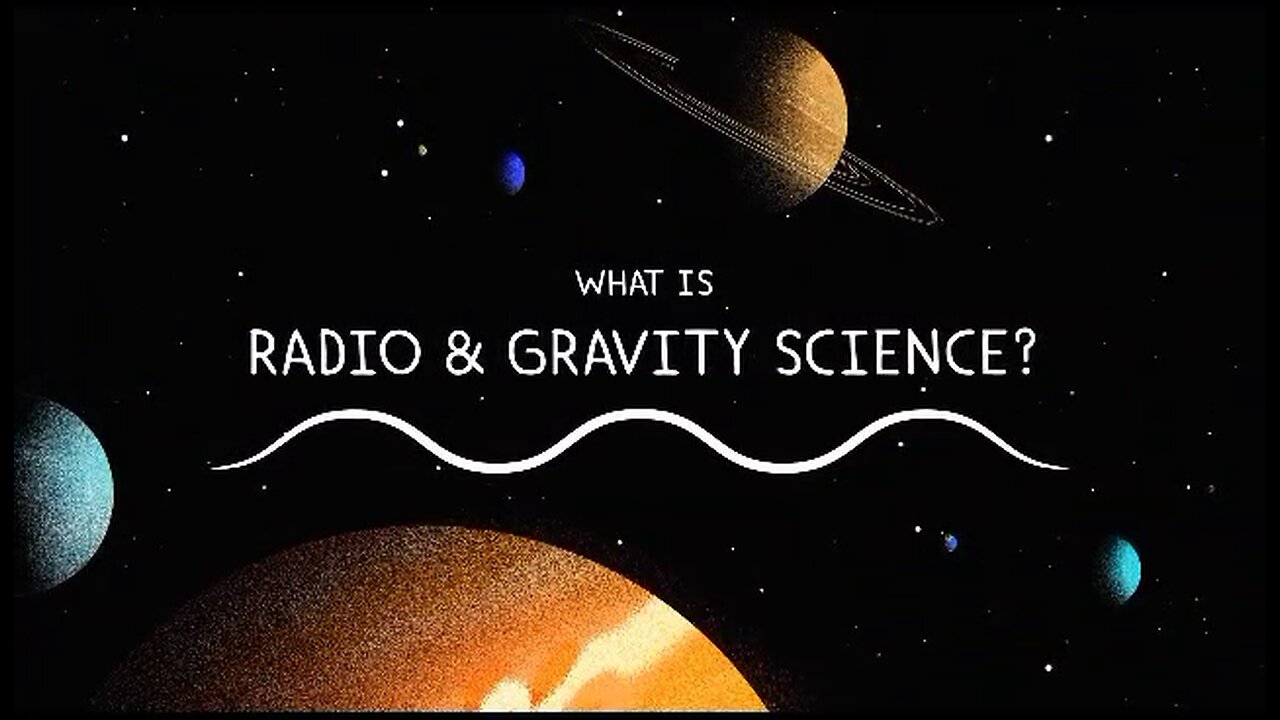Premium Only Content

How Nasa Uses Gravity and Radio Waves to Study Planets and Moons
The Deep Space Network, NASA's international collection of giant radio antennas used to communicate with spacecraft at the Moon and beyond, helps scientists and engineers use gravity and radio science experiments to learn more about our planetary neighborhood.
After reaching a spacecraft reaches its destination, it uses radio antennas to communicate with the Deep Space Network, which in turn transmits radio signals back to the spacecraft. Every spacecraft travels in a predetermined path emitting radio signals as it orbits around its target. Scientists and engineers can infer the spacecraft's location and how fast it's going by measuring changes in the spacecraft's radio signal frequency. This is made possible by the Doppler effect, the same phenomenon that causes a siren to sound different as it travels towards and away from you.
The Doppler phenomenon is observed here when the spacecraft and the Deep Space Network antenna move in relation to each other. Differences between the freguencv of radio sianals sent b the spacecraft and receiving never-before-seen images and scientific information on Earth, propelling our understanding of the universe, our solar system and ultimately, our place within it.
JPL manages the Deep Space Network for the Space Communications and Navigation (SCaN) Program, based at NASA Headquarters within the Space Operations Mission Directorate.
-
 1:12:00
1:12:00
The Car Guy Online
14 hours ago $1.63 earnedAutomakers EXPOSED, Whistleblowers SILENCED! NextGen Engineer Speaks Out!
12.5K6 -
 1:17
1:17
The Lou Holtz Show
15 hours agoThe Lou Holtz Show S2 EP16 | Hugh Freeze on Faith, Football & Restoring American Values #podcast
11.5K2 -

BEK TV
1 day agoTrent Loos in the Morning - 8/22/2025
10.3K -
 LIVE
LIVE
The Bubba Army
23 hours agoHogan's Death: Bubba Called it FIRST AGAIN! - Bubba the Love Sponge® Show | 8/22/25
2,164 watching -
 38:40
38:40
ZeeeMedia
18 hours agoMax Pace’s Crypto Revolution Story: Four Strategies to Win | Daily Pulse Ep 93
28.5K14 -
 2:16:46
2:16:46
"What Is Money?" Show
2 days agoBitcoin vs War, Violence, & Corruption w/ Gary Mahmoud
25.2K -
 28:33
28:33
DeVory Darkins
1 day ago $9.95 earnedNewsom suffers stunning EMBARRASSMENT as MAJOR retailer makes devastating announcement
33K62 -
 32:46
32:46
Coin Stories with Natalie Brunell
2 days agoInside Look at Strategy’s $70+ Billion Bitcoin Treasury
23.3K1 -
 8:21
8:21
MattMorseTV
18 hours ago $9.26 earnedTrump just SCORED a $500,000,000 LEGAL WIN.
121K47 -
 2:11:05
2:11:05
Side Scrollers Podcast
22 hours agoDISASTROUS Cracker Barrel Rebrand + Destiny PDF Allegations + More | Side Scrollers Live
78.6K30